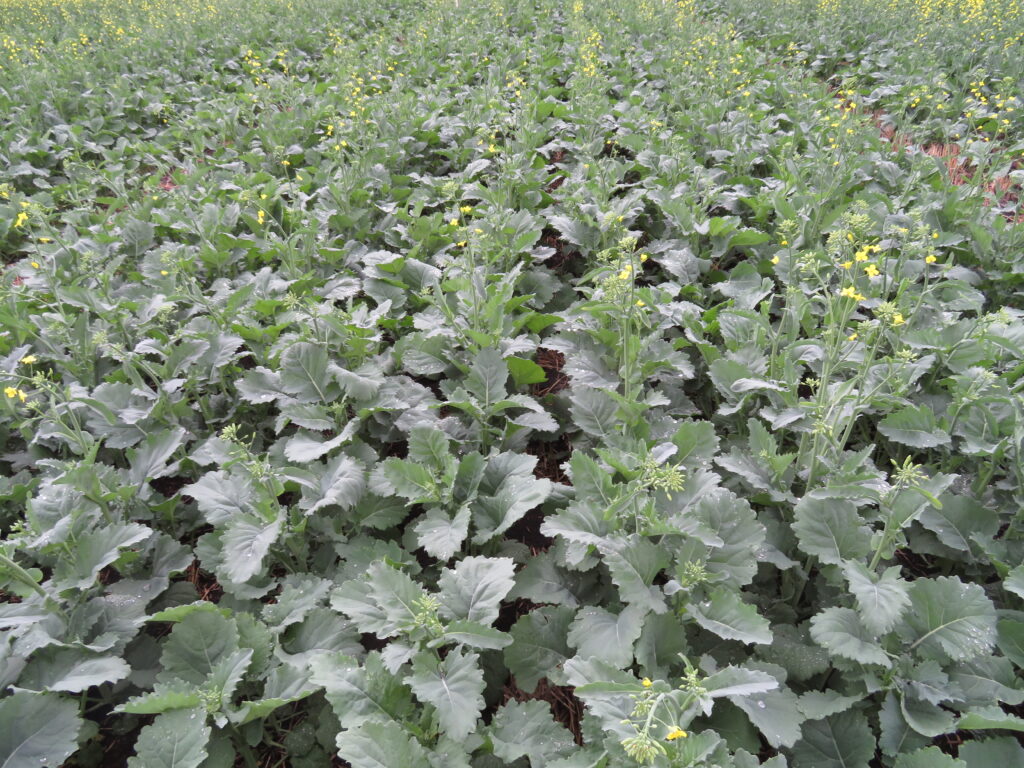At a recent virtual speaker series on canola topics, John Heard, Soil Specialist with Manitoba Ag, joined Ontario growers to answer questions on fertilizing canola. A canola crop needs 3 to 3.5 lbs of nitrogen (N) per bushel of grain produced. In spring canola production in Ontario, granular fertilizer is typically broadcast ahead of planting. The following are some of the questions and answers from the meeting.
In 2021 in Northeastern Ontario, there were heavy (5”) rains in July. How much nitrogen is lost in this situation?
Denitrification occurs on warm, saturated soils and is driven by microbial activity. The general number John uses is that for each day in spring when soils are cool (5° C) and saturated you lose about 2 to 4 lbs N/ac. The losses double with every 10° C increase in soil temperature, so later in spring when soils are about 15° C you lose 4 to 8 lbs N/ac per day. During July rains when soils are 25° C and saturated you have doubled the losses per day again, resulting in catastrophic N loss. Some producers noted those who added more nitrogen to canola in Northeastern Ontario after heavy July rains had higher yields than those who did not.
What are the ideal moisture conditions for mitigating N losses when broadcasting fertilizer?
When urea is not incorporated, up to 25% of the N can be lost to ammonia volatilization within a week if soils are warm and moist – this is the worst-case scenario. Soil moisture allows for urease enzyme activity (converting urea to ammonium/ammonia) while volatilization losses increase with temperature. If rain is not expected within 3-4 days, surface application without a protectant or incorporation is not advisable. Volatilization is a greater risk on sandy loams soils compared to clay loam or clay, but regardless of soil texture at least 4/10 of an inch of rain is needed to dissolve the urea and move it into the soil. If urea is applied to moist soil or 1/10 an inch of rain falls after application the urea melts and volatilization will continue until the soil dries or there is more rain to move it into the soil. As a rule of thumb, if there’s enough moisture that soil sticks to tires rather than throwing up dust, use a protectant like Agrotain. Where soils are persistently moist in the spring, it’s best to surface apply right before rain. Volatilization of nitrogen can also occur with ammonium sulphate (AMS) or Amidas if it sits on the soil for numerous days. This is especially true on calcareous soils and eroded knolls where high soil pH increases ammonia loss. There are no protectant products like Agrotain for AMS. John suggested that there may be lower losses with Amidas on acidic soils.
How deep does urea need to be incorporated to mitigate volatilization losses?
Incorporation of urea is a good way to mitigate volatilization, but shallow incorporation might not do the trick. John suggested that some vertical tillage tools do not incorporate deep enough. Research conducted in Quebec has shown that at 2” (5 cm) deep there can still be a 30% loss. There is a fair bit of scatter in the data (Figure 1) and, of course, with bone dry conditions volatilization will not occur even if fertilizer is sitting on the soil surface. But the trend in this data is clear; a depth of 3” (7.6 cm) is best for mitigating N losses.

When split-applying nitrogen, when should the second application be done?
In western Canada where it’s dry, canola growers split-apply nitrogen so they don’t invest too much in a crop that may suffer from drought – they only put the second application on if there is good yield potential. In Ontario where it is more wet, this approach can also be used to buffer against losses caused by overly wet conditions. John is not a fan of delaying too long. Canola can take up 9 lbs N/ac per day so it’s possible to short-change the canola by waiting too long. Canola Council of Canada suggest putting on the second application at the 3-leaf stage or Liberty herbicide timing so that the nitrogen gets to the roots by the time the crop has 6 leaves. That’s just prior to bolting. Waiting until plants are large means product is landing on leaves rather than the soil surface. This can cause leaves to become blotchy in appearance, although this discolouration is unlikely to translate to yield loss.
In Manitoba, canola growers typically don’t use tillage and frequently face the challenge of dry conditions in the spring. For John, the gold standard for managing nitrogen in canola is to apply nitrogen with an air seeder in a band (2” below and 2” beside the seed row). This slows nitrification which may increase N efficiency, and limits immobilization that can occur with surface application on plant residue. Other ways to enhance efficiency include using slow release nitrogen (e.g. polymer coated urea products such as ESN) or using protectants (nitrification inhibitors) to slow conversion of ammonium to nitrate.
Thank you to John Heard for sharing his expertise with Ontario canola producers.
Reference
Rochette P, Angers DA, Chantigny MH, Gasser MO, MacDonald JD, Pelster DE, Bertrand N (2013) Ammonia Volatilization and Nitrogen Retention: How Deep to Incorporate Urea? J. Environ. Qual. 42: 1635-1642.
